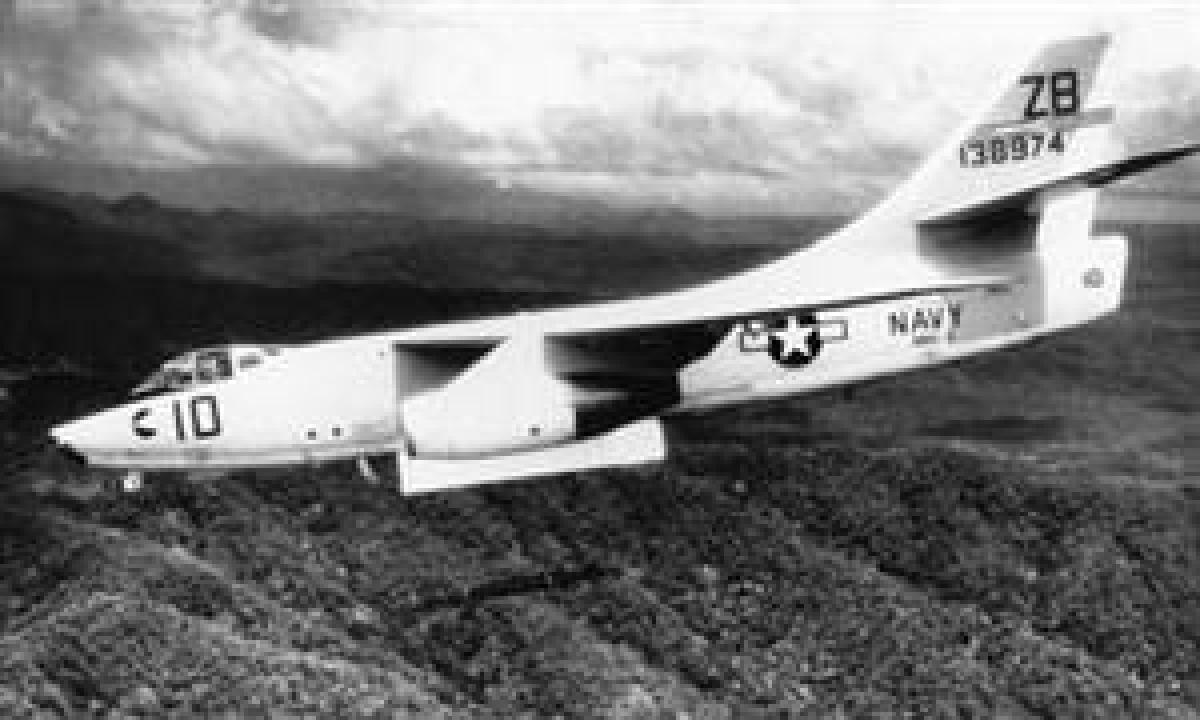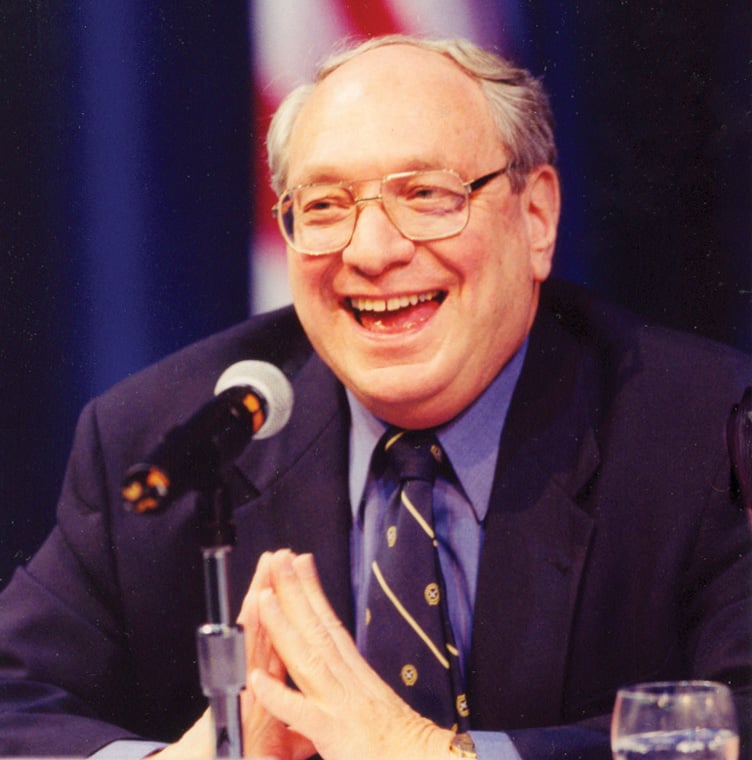Flying Whales Part II: Vietnam
Edward "Ed" Heinemann's Douglas A3D Skywarrior had its genesis as a 68,000-pound carrier-based atomic bomber. Its lasting fame, however, evolved from the aircraft's versatility throughout the Vietnam War.
After first flying on 28 October 1952, two basic bomber variants were built, the A3D-1 and -2. Among the differences between the two were a strengthened airframe and more powerful (10,500-pound static thrust) J57-P-10 turbojets compared to the ?1's 10,000-pound thrust J57-P-1, -6A, or -6B engines. All but two of the type's 13 variants were derivatives of the -2. (In 1962, when aircraft designations were changed for cross-service compatibility; the -1 became the A-3A and the -2 became the A-3B.)
With American combat involvement in Vietnam, the Skywarrior lived up to its name with versatility added. Often referred to as Whales because of their size, some 18 squadrons of the aircraft and their numerous detachments served ashore and afloat in Southeast Asia from 1964 to 1974, flying in reconnaissance, electronic countermeasure, electronic surveillance, tanker, and conventional strike roles.
The first use of Skywarriors in the conventional bombing role occurred on 29 March 1965, when six aircraft from VAH-2 on the Coral Sea (CVA-43) participated in a strike against Bach Long Vi Island in the Gulf of Tonkin. Even though a heavy haze precluded visual sighting of their targets, the A-3Bs made radar bombing runs to deliver some 12 tons of munitions on communist targets.
The big bombers on the Oriskany (CVA-34), fitted with gunsights from A-4 Skyhawks and multiple bomb racks in their weapon bays, successfully carried out dive-bombing attacks. The Hancock-class ships normally embarked a detachment of three to five Skywarriors; the larger carriers initially carried a full squadron but were soon reduced to detachments as the burden of strikes shifted to fighter and light/medium attack aircraft.
As the war progressed, it became apparent that the Whales were too large and slow for strikes against defended targets in North Vietnam, while the specialized tankers were more valuable on the limited carrier-deck space. The Skywarriors were rapidly retired from the bomber role, and from 1968 to 1970 they participated in the war only in special-mission roles.
As a tanker, a KA-3B or EKA-3B could carry just over 34,000 pounds of fuel, of which two-thirds could be transferred to other aircraft by way of a drogue system. The Skywarriors themselves had in-flight refueling probes fixed on the port side of the fuselage. The tanker variants could still carry up to 4,000 pounds of bombs, i.e., half the conventional weapons load of a straight bomber version.
Almost every strike launched from U.S. carriers on Yankee Station in the Gulf of Tonkin was accompanied by a Whale tanker to refuel combat-damaged aircraft, help out if the carrier-landing cycle was slow, or for rescue operations. One tanker detachment was credited with 71 saves of aircraft that would otherwise have been lost during an eight-month deployment. The average per carrier detachment saves during a deployment was about 20, and the total was, according to Heinemann, nearly 500.
Probably the most complex refueling operation occurred in 1967 when an Air Force KC-135A tanker saved six Navy aircraft, including two KA-3B tankers that had just given most of their fuel to Navy strike and fighter aircraft. The KC-135 was on a routine mission over the Gulf of Tonkin, refueling two F-104 fighters, when it was directed to rendezvous with two KA-3B tankers from the Hancock (CVA-19). The F-104s went along to provide fighter cover for the operation.
When the KC-135 reached the two Navy planes, the first had only three minutes of usable fuel on board. It had another 4,000 pounds of fuel that could be transferred to other aircraft but because of mechanical difficulties could not use the fuel itself. The Air Force tanker transferred a token amount of fuel to the second Skywarrior to keep it aloft and then plugged in the first KA-3B. During this refueling another rendezvous was set up for the emergency fueling of two Navy F-8 Crusader fighters from the Bon Homme Richard (CVA-31). The more critical of the Crusaders had only 300 pounds of fuel remaining and could not wait for the KA-3B to break away from the Air Force tanker. The F-8 slipped in behind the KA-3B and hooked up to the Navy tanker. The three planes—KC-135, KA-3B, and F-8—flew along linked by fuel connections.
In the midst of this operation another emergency rendezvous was ordered, this time for two Navy F-4 Phantoms in a critical fuel situation. After helping the Phantoms, the KC-135 pumped more fuel into the escorting F-104s and then had to break off and make for an alternate landing field in South Vietnam, being unable to reach its own base. All six Navy planes involved in the operation reached their carriers safely.
A procedure known as "wet-winging" was developed during the war. As a heavily damaged A-4 Skyhawk made its way out of Vietnamese air space with fuel streaming from ruptured fuel tanks, the pilot redezvoused with a KA-3B tanker. Linked together, the two aircraft flew back to a carrier with the tanker continuing to feed fuel into the Skyhawk, breaking off only moments before the A-4 landed. This procedure was employed several times.
Photo reconnaissance RA-3B Skywarriors of VAP-61 also flew from carriers in the Vietnam war, but operated mostly from land bases in Guam and the Philippines, as well as from Don Muang in Thailand and Da Nang in South Vietnam. The VAPs were the Navy's only squadrons with a cartographic capability in addition to conducting tactical reconnaissance, and were invaluable in updating the maps needed for operations in Vietnam. On a typical photo mission an RA-3B would shoot the equivalent of some 3,000 rolls of commercial camera film. (Navy light photographic squadron VFP-63 flew the RF-8 Photo Crusader in the theater.)
The RA-3B photo planes also roamed up and down the Ho Chi Minh Trail during the day and then, after the loss of two aircraft to small-arms fire, at night. Painted black and fitted with infrared sensors as well as real-time video displays, the RA-3Bs would fly at 500 feet or less, seeking hot spots produced by supply trucks and calling orbiting attack planes to pounce on the traffic. Carrying special infrared film, their cameras could also detect whether or not vegetation was alive, thus finding cut foliage that was being used for camouflage.
Two configurations-the EA-3B and EKA-3B variants?of electronic surveillance Skywarriors also flew in the war. (In 1965, then-Vice Admiral John T. Hayward flew one of these birds over North Vietnam from the Coral Sea; he had been the initial commanding officer of the Navy's first heavy attack unit, VC-5.)
By the early 1970s Skywarriors were replaced as tankers by KA-6D Intruders, in the electronics role by EA-6B Prowlers, and in photo reconnaissance by RA-5C Vigilantes.
A total of 21 A-3s were lost in Southeast Asia—6 combat losses and 15 operational. The combat losses consisted of four RA-3B photo aircraft, all operating from Naval Air Station Cubi Point in the Philippines and lost over North Vietnam, probably to antiaircraft artillery; and two A-3Bs from the Kitty Hawk (CVA-63). The first was probably bounced by a MiG over the China Sea while on a ferry flight from Cubi Point, and the second was lost to unknown causes while on a night mining mission over North Vietnam. Only one man was recovered of the crews of these combat losses.
The last of the 282 Skywarriors built for the Navy was delivered in January 1961. The type served in Fleet squadrons until 1991 when the last—an electronics intelligence variant—was retired. Heinemann's Skywarrior was a remarkable aircraft with a memorable 35-year career.





